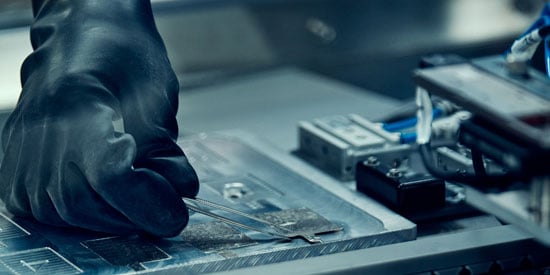New discovery shifts sodium batteries from risky liquid to safe solid
Deakin University researchers, in collaboration with University of Queensland, have developed a new non-flammable electrolyte material for use in sodium batteries, which provides a safer and cheaper alternative to lithium-ion batteries.
Electrolytes in traditional lithium and sodium batteries are commonly flammable, so this breakthrough – published this month in the prestigious journal Nature Materials – paves the way for a new critical material for safer batteries.
Led by Dr Xiaoen Wang and Professor Maria Forsyth from Deakin University’s Institute for Frontier Materials, the team has developed a solid polymer electrolyte material which can replace the flammable liquid solvents currently used in sodium batteries.
"Most industries that develop sodium batteries generally use carbon-based electrode and liquid electrolyte, which has low capacity and also can fuel a fire if the battery overheats," Dr Wang said.
"We are taking a different approach, using reactive sodium metal as an anode to increase battery capacity and in the process are developing safer electrolytes to ensure the safety of sodium batteries."
A key component in the electrolyte was developed by Dr Cheng Zhang and Professor Andrew K. Whittaker based at the University of Queensland’s Australian Institute for Bioengineering and Nanotechnology.
Known as a fluorine-containing polymer and originally used for biological application, this is the first time this class of polymer has been used in solid-state sodium batteries.
According to Wang, one of the main benefits in using sodium as an alternative source to lithium in battery production, is its low production cost.
"As lithium could become a rare commodity, the price of lithium batteries is high, while on the other hand, sodium resources are more abundant," Dr Wang said.
"Our polymer will support the use of sodium batteries, which are low cost when compared to lithium batteries."
One drawback of current sodium batteries is that they do not last as long as long as lithium batteries and have a lower energy density. However, in pairing them with the new polymer electrolytes, they offer close to 1000 cycles, comparable to the current well-developed lithium batteries.
With further research, opportunities could be on the horizon for use in stationary energy storage such as solar or even in electric cars.
Small-scale testing of the batteries has been successful, with upscaling and prototyping coming soon.
To continue and extend Deakin’s extensive research into sodium and lithium batteries, Deakin is currently establishing a new $9.5 million facility at the Melbourne Burwood campus, due for completion in August this year.
The expansion project, which includes a $5.2 million contribution from the Victorian Government via the Victorian Higher Education State Investment Fund (VHESIF), involves upgrading the current Battery Technology Research and Innovation Hub (BatTRI-Hub) facility to include a testing lab and pilot production line to research and manufacture advanced lithium and sodium batteries.
To learn more about BatTRI-Hub or discuss partnership opportunities visit: https://www.deakin.edu.au/research/research-partnerships/battri-hub.
Share this story

